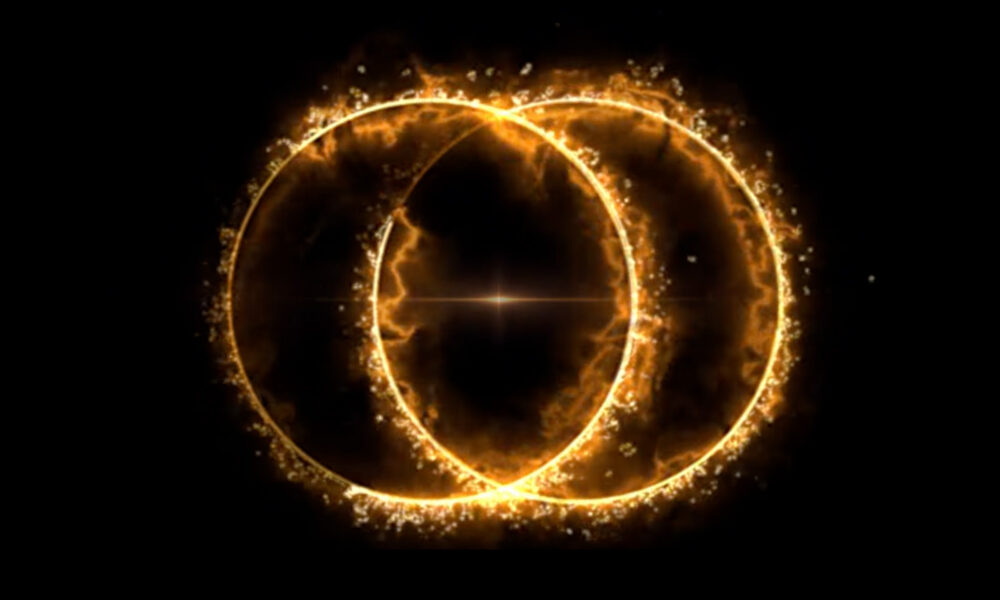Astronomers have made a groundbreaking discovery of a colossal double-ring structure located approximately 7.5 billion light years from Earth. This extraordinary formation, consisting of two enormous rings that glow vibrantly in radio wavelengths, has left scientists intrigued about its origins. The findings are documented in a study published in the Monthly Notices of the Royal Astronomical Society.
The newly identified structure is classified as an Odd Radio Circle (ORC), a type of cosmic object first identified just six years ago. Among the handful of ORCs discovered, this is only the second to feature two distinct rings. ORCs are believed to consist of magnetized plasma that can only be detected through radio light. They can be significantly larger than entire galaxies; in fact, many are dozens of times the diameter of the Milky Way.
Astrophysicists speculate that these mysterious formations may be remnants of catastrophic events that occurred billions of years ago. According to the study’s lead author, Ananda Hota, who serves as an assistant professor at the University of Mumbai’s Centre for Excellence in Basic Sciences, ORCs may hold essential clues regarding the co-evolution of galaxies and black holes.
The ORC identified in this study is named after its host galaxy, RAD J131346.9+500320. This particular cosmic structure resides in a densely populated region known as a galaxy cluster, where multiple galaxies are gravitationally bound and situated in close proximity. This context suggests that the formation of ORCs might be influenced by interactions between surrounding plasma and jets emitted from supermassive black holes at the centers of galaxies.
Hota elaborated that the jet from the black hole may have created clouds of magnetized plasma. These clouds could later be re-energized by a massive explosion near the galactic center, causing them to emit radio waves and appear as glowing rings once again.
Co-author Pratik Dabhade, an assistant professor in the astrophysics division at the National Centre for Nuclear Research in Warsaw, Poland, emphasized the significance of these discoveries. He stated, “These findings indicate that ORCs and radio rings are not isolated curiosities; they form part of a broader family of exotic plasma structures shaped by black hole jets, winds, and their surrounding environments.”
The discovery of ORCs is part of a larger initiative in astronomy to explore what researchers are calling a “low-surface brightness universe.” This area contains objects that were previously obscured from view but are now being revealed thanks to advanced radio telescopes. Among other intriguing discoveries in this realm are a perfectly round supernova remnant and short-lived stellar objects known as Wolf-Rayet stars.
As astronomers continue to uncover these enigmatic structures, the potential for new insights into the universe’s evolution and the dynamics of galaxies remains vast. The study of ORCs is sure to captivate the scientific community and may lead to further revelations about the cosmos in the years to come.







